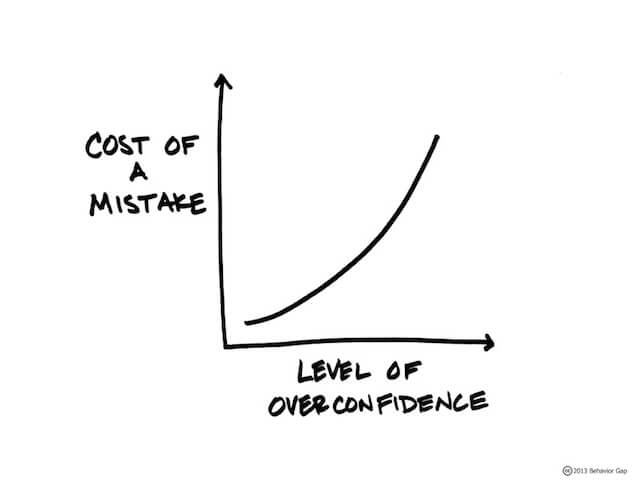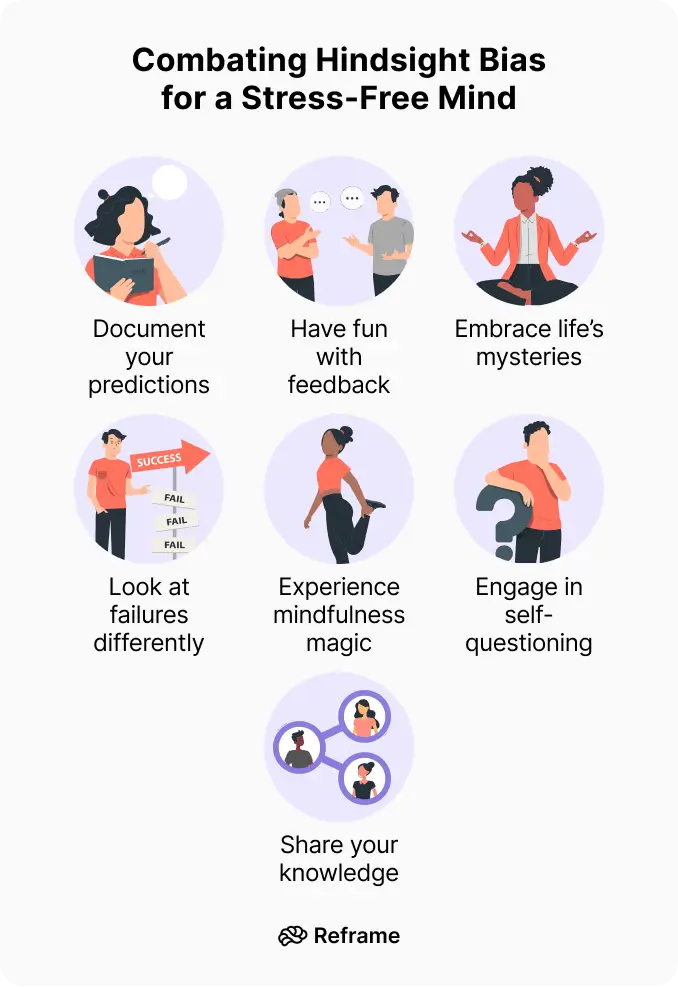Key takeaways
- Hindsight bias is when your brain makes the past feel more predictable than it was. It convinces you that you knew what would happen, even if you didn’t.
- It pops up in marketing decisions, campaign reviews, and team meetings. It makes people think the outcome was obvious and stops them from learning what really went wrong.
- You can’t always avoid it, but you can learn to spot it. Look at what really happened instead of proving you were right. That’s how you make better decisions next time.
Ever say “I knew that would happen” right after something caught you off guard?
That’s hindsight bias.
It makes you think you saw it coming, even if you didn’t.
Your brain rewrites the past to make the outcome feel obvious.
In marketing, that’s dangerous.
It makes failed campaigns feel like they were always going to flop.
It might be the reason why weak ideas get defended.
Teams repeat bad patterns because “we knew it would go that way.”
And that’s the real problem.
When it feels like you already knew, you stop learning from what actually happened.
That’s when hindsight bias becomes dangerous.
It kills reflection and smarter strategy.
And it makes smart people believe there’s nothing they need to fix.
What is hindsight bias?
Hindsight bias is your brain’s way of making the past feel cleaner than it really was.
Once you know how something ends, it’s hard to remember how uncertain it felt before.
Your brain fills in the blanks.
It replaces confusion with false confidence.
Psychologists call it a “memory distortion.”
You don’t just think the outcome made sense, you actually believe you expected it.
Of course that belief by itself isn’t harmless.
However, it gives you a false sense of understanding.
And once you feel like you understand something, you stop questioning it.
That’s what makes hindsight bias so powerful
And dangerous.
It changes how you see the past.
And it can also affect how you think in the future.
3 ways hindsight bias screws with your marketing
#1 – It makes flops feel like they were always going to happen
Once a campaign flops, it’s easy to act like the warning signs were obvious.
The headline felt weak.
The offer was off.
The channel wasn’t right.
Everyone suddenly remembers the red flags.
But if people really saw it coming, they would’ve spoken up.
They would’ve paused, tested further, or just said no.
Hindsight bias makes failure feel inevitable.
This isn’t just a marketing thing either.
Before their startups failed, 77% of founders believed they’d make it.
But after things went south, only 58% still said they believed it from the start.
It creates this fake clarity that makes people feel like they “knew” all along.
And that stops them from looking deeper.
So no one asks, “what did we actually miss?”
Maybe the insight behind the creative was too vague.
Maybe the offer flopped because the audience segment was wrong.
Maybe the ad spend got wasted because the targeting was too broad, or too safe.
That’s all stuff you can fix.
But if the team shrugs and says “we knew it wouldn’t work,” that learning never happens.It just becomes a story that fits the result.
Not one that helps you do better next time.

#2 – It shuts down honest post-mortems
Hindsight bias makes teams gloss over what really happened.
You skip the uncomfortable stuff.
Bad calls start sounding smarter than they were.
That’s a problem.
Post-mortems only work when people are honest.
Say a campaign underperformed.
Instead of unpacking why the CTA didn’t convert or why email click-throughs tanked, the team just writes it off as a weak idea from the start.
That kills the whole point of the review.
No one brings up the rushed approvals.
Or the fact that the marketing persona wasn’t right to begin with.
You get a neat little story that feels satisfying, but teaches you nothing.
And that version of events sticks.
So, the same problems sneak into the next campaign.
Hindsight bias turns post-mortems into blame-dodging rituals.
But they’re supposed to be where you get sharper.
Even Google Ads take a while to really get going.
They need to exit their “learning phase” before your PPC campaigns start performing well.
Mistakes aren’t the problem.
Not learning from them is.

#3 – It feeds overconfidence in future plans
When the past feels like it made perfect sense, the next move feels obvious.
And that’s the trap.
Hindsight bias makes you forget how unsure you were the first time around.
So now, the future feels predictable, even when it’s not.
You start trusting your gut more than your data.
You skip testing because it feels like you’ve done it all before.
You rush the timeline because it all feels familiar.
That’s how teams overpromise and underdeliver.
To avoid that, start by writing down what you’re unsure about before you start.
This forces you to see the gaps.
Not just the story you want to believe.
Then pressure-test your plan.
One out of eight A/B tests leads to a meaningful result.
And that’s often all you need to make a big difference.
Don’t just assume you’ll spot problems as they come up.
Bias makes you overconfident in your own judgement, especially when things feel familiar.
But the more certain you feel, the more likely it is you’re missing something.

How to stop hindsight bias from messing with your head
You can’t switch it off completely.
But you can catch it before it throws off your thinking.
Start by watching for that moment where you think, “I knew it.”
That’s your cue to pause.
You might think you expected it, but that’s just your brain connecting the dots after the fact.
Writing it down helps because people remember 34% of what they write, and only 5% if they don’t.
So, before a launch or a big call, note what you actually expect.
Then compare that with what you remember thinking after it’s done.
Chances are, they won’t match.
That mismatch is hindsight bias in action.
And don’t just rely on your version of events.
Talk it through with someone else.
They might remember it differently or catch something you didn’t.
That back-and-forth keeps your memory honest.
You won’t catch hindsight bias every time.
But the more you practise spotting it, the better your thinking gets.
Start trusting real patterns.
Focus on what actually worked, not just what feels like it made sense after.
That’s how good marketers get sharper.
Reflection’s only useful if it’s honest.
Focus less on being right and more on asking why
Hindsight bias sneaks up on everyone.
It’s normal. It happens.
What matters is what you do after.
Stop obsessing over whether you got it right.
And start asking what led to the result.
Understanding the why behind an outcome is what helps you grow.
Chasing the feeling of being “right” just keeps you stuck.
So next time you catch yourself thinking “I knew that,” take a pause.
Ask if you’re seeing it clearly, or just tidying up the story now that you know how it ends.
That half-second check is all it takes.
Do it enough, and you’ll stop clinging to being right and start making smarter calls.


